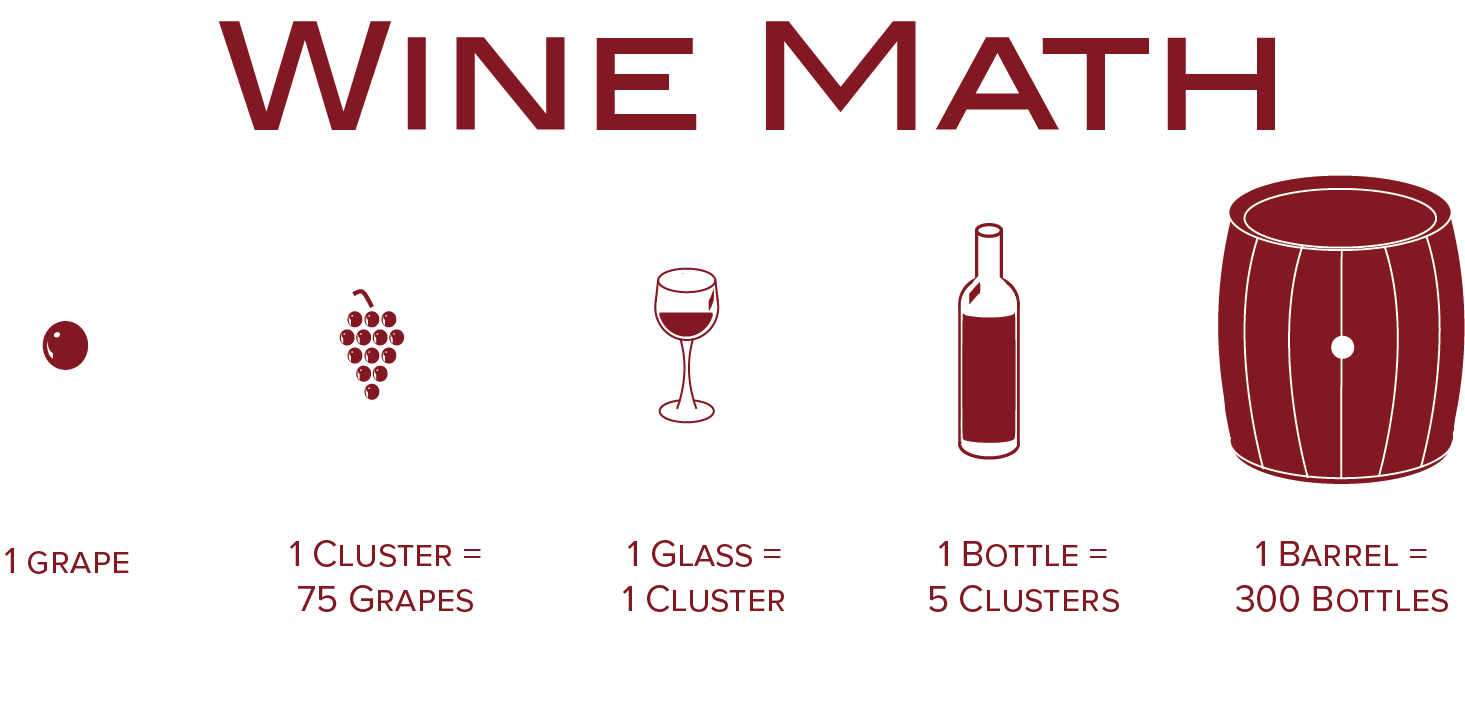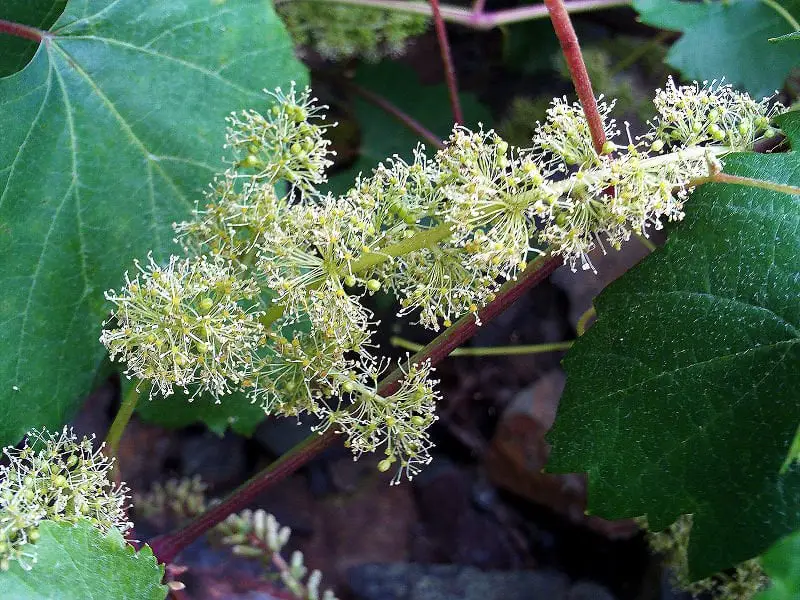Have you ever wondered why seedless grapes still contain seeds? It may seem contradictory, but the truth is that seedless grapes indeed have seeds, they are just much smaller and undeveloped. This article will explore the fascinating reason behind this phenomenon, delving into the genetic origins and techniques used to produce seedless grapes, and ultimately shedding light on why these fruit varieties continue to bear seeds despite their name.
Seedless Grapes: A Paradoxical Name

Seedless Grapes Introduce a Conundrum
Seedless grapes are a unique and intriguing fruit that captivate consumers with their juicy sweetness and convenient, snackable size. However, the name “seedless grapes” can be quite misleading, as these fruits do indeed have seeds. This paradox raises the question: why do seedless grapes have seeds?
Understanding Seedless Grapes
Defining Seedless Grapes
Before delving into the intricacies of seedless grapes, it is essential to establish what exactly defines them. Seedless grapes are grape varieties that produce fruits without fully formed, mature seeds. While they may contain remnants of underdeveloped seeds, these are typically small, soft, and virtually unnoticeable. As a result, seedless grapes offer a more enjoyable eating experience without the inconvenience of spitting out seeds.
Types of Seedless Grapes
There are various types of seedless grapes available, each with its unique characteristics and flavor profiles. Common varieties include Thompson Seedless, Flame Seedless, and Crimson Seedless. These grapes vary in color, ranging from green to red, but they all share the common characteristic of being seedless or nearly seedless.
Seedlessness: A Natural or Human Intervention?
The question of whether seedlessness in grapes is a natural occurrence or a result of human intervention has long intrigued botanists and horticulturists. The answer lies in a combination of both factors. While certain grape varieties naturally exhibit seedlessness, human intervention through selective breeding and propagation has played a significant role in cultivating and popularizing seedless grapes.
Seedless Grapes: A Horticultural Marvel
The development and success of seedless grapes in the horticultural world cannot be understated. The ability to produce grapes without mature seeds opens up possibilities for increased consumption and culinary versatility. Horticulturists continue to push the boundaries of grape cultivation, striving to enhance seedlessness while maintaining desirable flavors and textures.

The Mystery Unveiled: Why Seedless Grapes Have Seeds
Parthenocarpy: The Answer to the Mystery
The mystery of why seedless grapes have seeds can be traced back to the phenomenon known as parthenocarpy. Parthenocarpy refers to the development of fruit without fertilization, resulting in fruit that does not require pollination or the presence of male pollen to set seeds. In the case of seedless grapes, parthenocarpy allows the fruits to develop and mature without the need for pollination.
Stenospermocarpy: Another Reason for Seedless Grapes with Seeds
While parthenocarpy contributes to the seedlessness of grapes, it does not entirely eliminate the presence of seeds. Stenospermocarpy, a process where some seeds fail to develop fully, is another reason why seedless grapes still possess seeds, albeit in a much-reduced and inconspicuous form. The combination of parthenocarpy and stenospermocarpy creates the illusion of seedlessness while allowing for minimal seed development.
Parthenocarpy: Fruit Development Without Fertilization
Definition and Process of Parthenocarpy
Parthenocarpy is a fascinating biological process that allows fruit to develop without the need for fertilization. In other words, fruit can grow even without the presence of pollen or pollination. This process occurs when fruit undergoes hormone activation and response, bypassing the normal steps of fertilization and seed formation.
Artificially Inducing Parthenocarpy in Grapes
Horticulturists and grape growers have learned to exploit parthenocarpy to their advantage. By utilizing techniques to stimulate hormonal responses or manipulate environmental conditions, they can induce parthenocarpy in grapes artificially. This allows for the production of seedless grapes that retain the desired flavor, texture, and appearance characteristics.
Potential Benefits of Parthenocarpy in Seedless Grapes
The ability to induce parthenocarpy in grapes offers several potential benefits for both growers and consumers. Firstly, it grants growers more control over fruit production, allowing them to bypass concerns related to pollination, pollen availability, and cross-pollination. Additionally, seedless grapes resulting from parthenocarpy are often more uniform in size and appearance, making them visually appealing for consumers.

Stenospermocarpy: Limited Seed Development in Seedless Grapes
Understanding Stenospermocarpy
While parthenocarpy is the primary reason behind seedlessness in grapes, the phenomenon of stenospermocarpy also plays a crucial role. Stenospermocarpy refers to the limited or underdeveloped seed formation within seedless grape varieties. This incomplete development of seeds further enhances the perception of seedlessness, as the seeds present are usually soft, small, and not fully developed.
Factors Influencing Stenospermocarpy in Grapes
Several factors influence the degree of stenospermocarpy in seedless grapes. Environmental conditions, such as temperature and humidity, can directly impact the development of seeds. Additionally, genetic factors, as well as the grape variety itself, influence the extent of stenospermocarpy. By understanding these factors, grape growers can fine-tune cultivation practices to achieve the desired level of seedlessness.
Exploring the Genetic Factors Behind Stenospermocarpy
The genetic factors that contribute to stenospermocarpy in seedless grapes are complex and multifaceted. Through careful breeding and selection, grape breeders can hone in on genetic traits that promote lower seed development. By identifying these genes and incorporating them into new grape varieties, breeders can further enhance the seedlessness of grapes while maintaining their other desirable qualities.
Seedlessness in Grapes: A Desired Trait
Market Demand for Seedless Grapes
Seedlessness in grapes is a highly desirable trait among consumers, contributing to the significant market demand for these fruits. Seedless grapes eliminate the inconvenience of dealing with seeds while providing a fuss-free eating experience. As a result, supermarkets and grocery stores face consistent demand for seedless grape varieties throughout the year.
Advantages of Seedless Grapes for Consumers
Consumers reap various advantages from choosing seedless grapes over their seeded counterparts. The absence of seeds eliminates the need for spitting or removing seeds while consuming the fruit, making it a more enjoyable and convenient snacking option. Seedless grapes are also favored by those who prefer a smoother texture and find seeded grapes to be less palatable.
Cultivation Factors Favoring Seedless Grape Production
The cultivation of seedless grapes presents several favorable factors to grape growers. The absence of seeds allows for a more efficient harvesting process, as there is no need to separate seeds from the fruit. Additionally, seedless grapes tend to have a longer shelf life, reducing the risk of spoilage and increasing marketability. These benefits contribute to the continued production and popularity of seedless grape varieties.

Propagation Techniques for Seedless Grapes
Grafting: A Common Method for Seedless Grape Propagation
Grafting is a common propagation method used to propagate seedless grape varieties. This technique involves joining a shoot from a desired seedless grape variety, known as the scion, with the rootstock of another grape variety. The rootstock provides the necessary vigor and disease resistance, while the scion ensures the reproduction of the desired characteristics of seedlessness.
Other Asexual Reproduction Techniques in Grapevines
Aside from grafting, grape growers can utilize various other asexual reproduction techniques for seedless grape propagation. These methods include layering, where a new plant is formed from a branch that is in contact with the soil and rooting, and cutting, where a stem or bud is taken from the parent plant and rooted to develop into a new individual. These propagation techniques enable grape growers to maintain the desired seedlessness in subsequent generations.
Seed Disruption Techniques in Seedless Grapes
Presenting Seedless Fruit to Consumers
To maintain the perception of seedlessness in seedless grapes, it is crucial to ensure minimal seed presence during presentation to consumers. Quality control measures are employed to remove any visibly discernible seeds. Packaged seedless grapes undergo thorough inspection and sorting processes to ensure a consistent and seedless appearance, reinforcing consumer expectations.
Refining Techniques to Minimize Seed Formation
Grape growers continuously refine their cultivation and vineyard management techniques to minimize seed formation in seedless grape varieties. By carefully adjusting variables such as pruning, fertilization, and irrigation, growers can manipulate the growth and development of the fruit, resulting in fewer seeds. These meticulous practices help to maintain the seedlessness of grapes and meet consumer demand.

The Culinary and Nutritional Aspects of Seedless Grapes
Seedless Grapes in Cooking and Baking
Seedless grapes are not only a delightful snack but also a versatile ingredient in cooking and baking. From adding a burst of sweetness to salads to enhancing the flavor profile of desserts, seedless grapes offer a unique touch to a wide array of culinary creations. Their seedlessness eliminates the need for tedious seed removal, allowing for effortless incorporation into various dishes.
Nutritional Content of Seedless Grapes
In addition to their culinary applications, seedless grapes boast an impressive nutritional profile. They are rich in vitamins C and K, providing essential antioxidants that support immune function and promote healthy blood clotting. Additionally, seedless grapes contain fiber, which aids in digestion, and are low in calories, making them a healthy and satisfying choice for those watching their weight.
Health Benefits and Culinary Versatility
The combination of the health benefits offered by seedless grapes and their culinary versatility makes them an ideal fruit for individuals seeking a well-rounded diet. Their natural sweetness and juiciness make them a healthy alternative to sugary snacks, and their low-calorie content allows for guilt-free indulgence. Whether enjoyed on their own or incorporated into various recipes, seedless grapes contribute to a balanced and nutritious lifestyle.
The Fascinating World of Seedless Grapes
The Long History of Seedless Grapes
The cultivation of seedless grapes has a long and storied history. Ancient civilizations, such as the Egyptians, Greeks, and Romans, already recognized and cherished the unique quality of seedless grapes. Over the centuries, grape growers and horticulturists have painstakingly developed and refined seedless grape varieties, resulting in the diverse range of options available today.
Evolution and Development of Seedless Varieties
The discovery and development of seedless grape varieties have been a result of both natural phenomena and human cultivation practices. Through selective breeding, botanists and horticulturists have been able to enhance seedlessness while maintaining desirable flavor and texture characteristics. This ongoing process continues to shape the evolution and development of new seedless grape varieties.
Exploring Future Possibilities in Seedless Grape Cultivation
As the demand for seedless grapes continues to grow, the future of seedless grape cultivation holds promising possibilities. Advancements in horticultural practices, such as genetic engineering and precision agriculture, may further enhance seedlessness, promote disease resistance, and optimize grape quality. The continued exploration of different grape varieties and cultivation techniques ensures a fruitful future for the world of seedless grapes.



